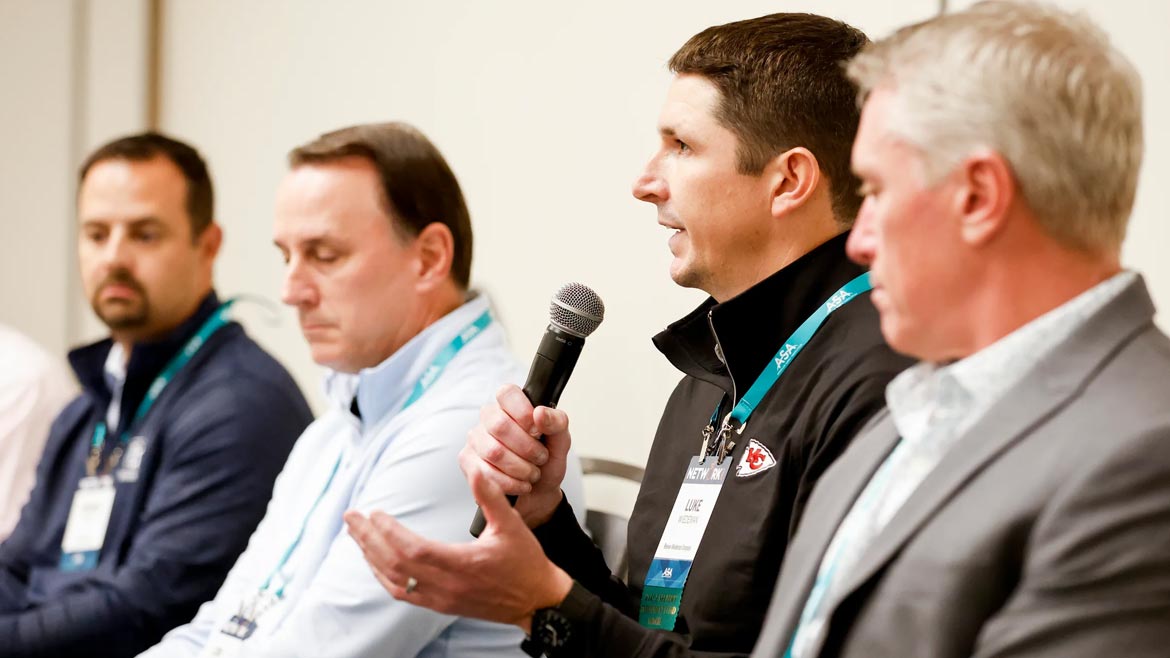Mid 2022 saw extremely high U.S. inflation rates, with June reaching 9.1%. Since that peak, inflation rates have consistently declined, but the impact on business has been lasting. In both 2022 and 2023, most PHCP-PVF distributors reported record sales numbers, according to the annual Premier 150 distributors’ survey, which they know is largely credited to price increases and inflation.
Throughout 2024, the construction industry is anticipating slowdowns in several sectors, and distributors are preparing for a good year, but not one that mirrors the record numbers of 2022 and 2023.
At ASA NETWORK in Orlando, Florida this past November, attendees gathered for a panel discussion titled, “How to grow without inflation,” where five top distributor members shared their perspective and plans for the year ahead — a year without inflation to help fuel record sales. ASA’s VP of Sales and Operations Mike Miazga mediated a conversation between Don Polleta, vice president, sales and marketing at Torrco, Patrick Duffy, president of Irr Supply Centers, Stan Allen, president of Northeastern Supply, Luke Wiedeman, vice president, purchasing at Reeves Wiedeman Co., and Mike Plasier, CEO of Plumbing & Heating Wholesale.
The group started out discussing what technology trends they’re seeing and how to use them to boost efficiency. Some highlights include:
- Use technology to facilitate the automation of information such as lead times and repeat customer order habits;
- Use technology to communicate better; the younger generation likes technology and using technology to communicate. Increase touchpoints and communication frequency with customers; and
- Meet your customers where they are at; some customers are further along with technology adoption, so offer many different ways to communicate, order and connect.
Next the panelists were asked about artificial intelligence (AI) and its impact on sales. The group had this advice to share:
- Use AI to be efficient, not to innovate;
- Services like ChatGPT and AI phone services can boost productivity and ease of business;
- AI can be used for measuring success, analyzing data, inventory and price optimization;
- Processes like measuring sales analytics and tracking call activity can be automated; and
- AI tools should enhance the customer experience, not complicate it.
Continuing the conversation on sales, the group was asked about top sales challenges they’re facing heading into 2024. They had these points to share:
- In some cases, sales has become more transactional and less relational;
- The big box stores are distributors’ biggest competitor; ask your contractor customers why they would chose to purchase big box and use that information to adapt; and
- Manufacturers selling direct to consumer is an ongoing challenge; prioritize relationships with manufacturers that support the wholesale-distributor.
Based on the previous question’s responses, the panel was asked how they’re preparing for a less relationship-based customer. Here’s what they has to say:
- Leverage technology to strengthen relationships, not to be the relationship;
- Stay relevant as customers change; it’s a blend of relationships and technology adoption;
- The more ways a customer can buy, the stockier they become;
- Some customers will ne to be taught how to engage with technology; they can chose not to engage, but you need to offer technology;
- Survey contractors to see how they want you to communicate with them;
- Mobile devices are king; use texting services for orders and mobile apps for internal employee communication; and
- Focus on training and diagnostic tools for today’s high-tech products.
To wrap things up, the panelists were asked what they’re No. 1 focus is for 2024. Some of the top focuses mentioned were:
- “Grow your own:” Focus on training, retaining and developing your team;
- Improve facility for customer experience; make the brick and mortar location a place customers want to be;
- Focus on the “first mile,” — the salesforce; salespeople are selling themselves and need to improve relationships to combat product price comparison;
- Internal reorganization — people wear many hats; roles need to be defined and processes need to be streamlined;
- Address the role of outside sales; potentially use fewer people with more territory — the “milk run” sales days are over; and
- Think outside the box when it comes to potential customers and market sectors. Expand beyond plumbing and HVAC.





